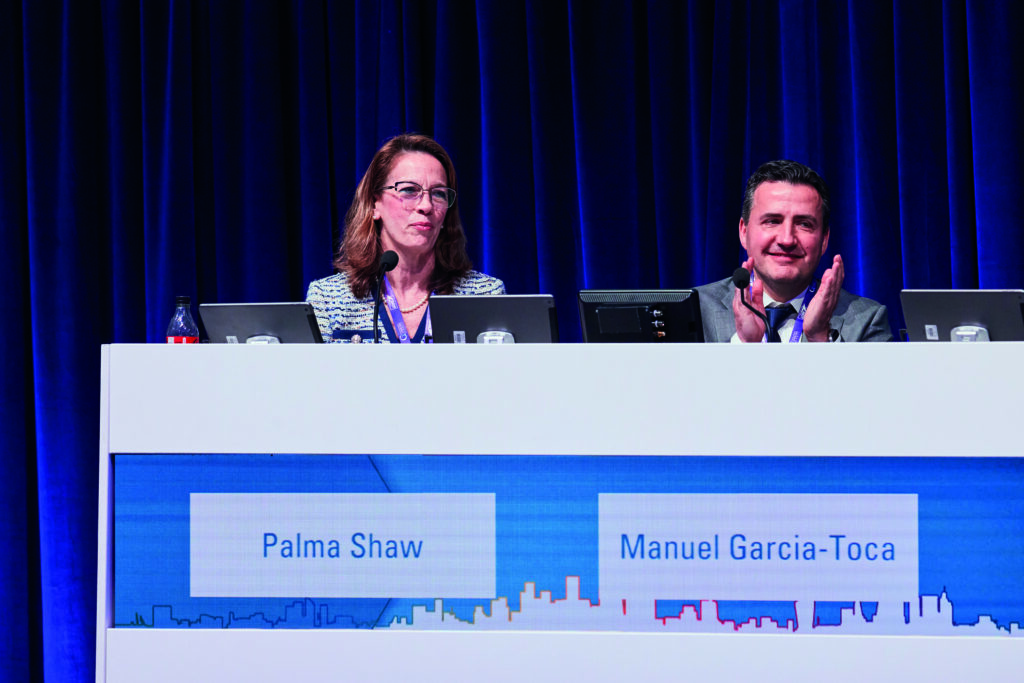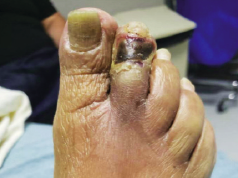
Leading vascular surgeons from across the globe contributed pearls of wisdom on how to go about tackling inevitable turf battles from other specialties practicing in the vascular disease space during a leadership challenges session staged by the World Federation of Vascular Societies (WFVS) at the recent 2024 Charing Cross (CX) International Symposium in London, England (April 23–25).
Palma Shaw, MD, WFVS secretary-general, who had organized the session with Manuel Garcia-Toca, MD, chair of the Society for Vascular Surgery (SVS) Leadership Development Committee, captured the tone of the session with a couple of anecdotes depicting how she confronted conflict in the operating room during a previous clinical appointment.
“When I went to Boston University, vascular surgery was not doing the endovascular cases,” Shaw, now professor of surgery at Upstate University in Syracuse, New York, explained. “They were doing the cutdown and radiology would bring the instruments in and do the case. When I showed up, I could do it all by myself. I invited them to participate in my first case and they deliberately didn’t show up. But it all worked out; I was nice, but I never had to invite them again.
“Then I was the first vascular surgeon doing procedures in the cath lab. There was one very gracious, professional gentleman, but then in the control room I would hear snickering, and I would just be doing my case: ‘Who let a vascular surgeon in the room?’—they would be making these kinds of comments. But I was always nice to them, polite with them, I never gave them excuses to use that against me.”
Shaw and Garcia-Toca, an associate professor of surgery at Emory University in Atlanta, assembled a panel of senior surgeons under the auspices of the Global Training Initiative to tackle key challenges put to them by vascular surgery trainees, with the aim of providing soft skills know-how required in practice but often neglected in medical school.
Shaw’s experience emerged during a scenario put forward by European Vascular Surgeons in Training (EVST) member Desiree van den Hondel, MD, a vascular surgery fellow at Rijnstate Hospital in the Netherlands: “Bridging divides—effective approaches to managing interdepartmental turf battles.”
Van den Hondel presented a hypothetical situation in which they are a newly appointed chief of vascular surgery at a high-volume center, where lower extremity procedures are managed by interventional cardiology and radiology. Previously, they were part of a thriving multidisciplinary group and they now want to implement this practice in their present role but are facing resistance. They have the backing of the chief medical officer but the CMO urges caution.
For his part, Pradeep Mistry, MD, a vascular surgeon based in Johannesburg, South Africa, and a vice president of the WFVS, urged inclusivity over exclusivity.
“When we practice vascular medicine, we don’t see ourselves just as vascular surgeons,” he said. “And if you’re offering a service, and if you’re at the point of service where you see your patients at the outpatient clinic, that’s the first place where you encounter your patients. You are not seen as just a technician; we in South Africa are in a country of have and have nots.
“In private practice we have managed to secure I would say 95%-plus of the vascular patients just because we are willing to go that extra mile in being the vascular physicians for the patients.
“We have very few interventional radiologists, and they are not as hard working as vascular surgeons, just by the definition that we had to go through doing general surgery and trauma first. Going through that gives you a bit more resilience in terms of what you need to do.”
Co-moderating with Shaw, Garcia-Toca emphasized the need for negotiating skills. “We are really good at our craft of vascular surgery,” he noted, “but those negotiating skills: we don’t learn them. And we always need to go in with the mentality of win-win for both parties. Separating and excluding people doesn’t work.”
Prem Chand Gupta, MD, the current president of the WFVS, as well as president of the Vascular Society of India, is part of a 15-member multispecialty team in Hyderabad. He, too, banks on an inclusivity message. “When you have a case that is particularly difficult, it might be a good idea to massage egos and call [the other specialties] to help you with that case, and gradually the relationship does build,” he said.
Martin Bjorck, MD, professor emeritus from Uppsala University Hospital in Uppsala, Sweden, outlined a scenario in which he and his team had to tackle a turf battle head on. Some of the radiologists tended to “monopolize the endovascular procedures,” he said, leading the surgeons to take action, with administrative support.
“Fifteen years ago, we had to be decisive, and we stopped writing referral notes to the radiologists. Since then, we now do all of the arterial work ourselves and we have a much better collaboration with our radiologists.
“We ended up taking more than 1,000 procedures from radiology to vascular surgery per year and that needed a change in budget—that was the most difficult part [to achieve]. That was the decisive point, because then we had the budget.”
Bjorck added that if they could have done anything differently, he would have urged that the action be taken more quickly: “We were too patient. There will be conflict sooner or later; better to take it sooner.”
Philippe Kolh, MD, from Centre Hospitalier Universitaire de Liège in Belgium, highlighted the need to have senior members of the hospital administration on board. “The key is to have the head of the hospital with you,” he said, “because you will get conflict.
“Of course you need the training, you need to see where the guidelines are, what they recommend in terms of number of procedures, and in term of skills. But you cannot go alone; you need a plan; if there is a fight, I’d rather take it sooner.”












